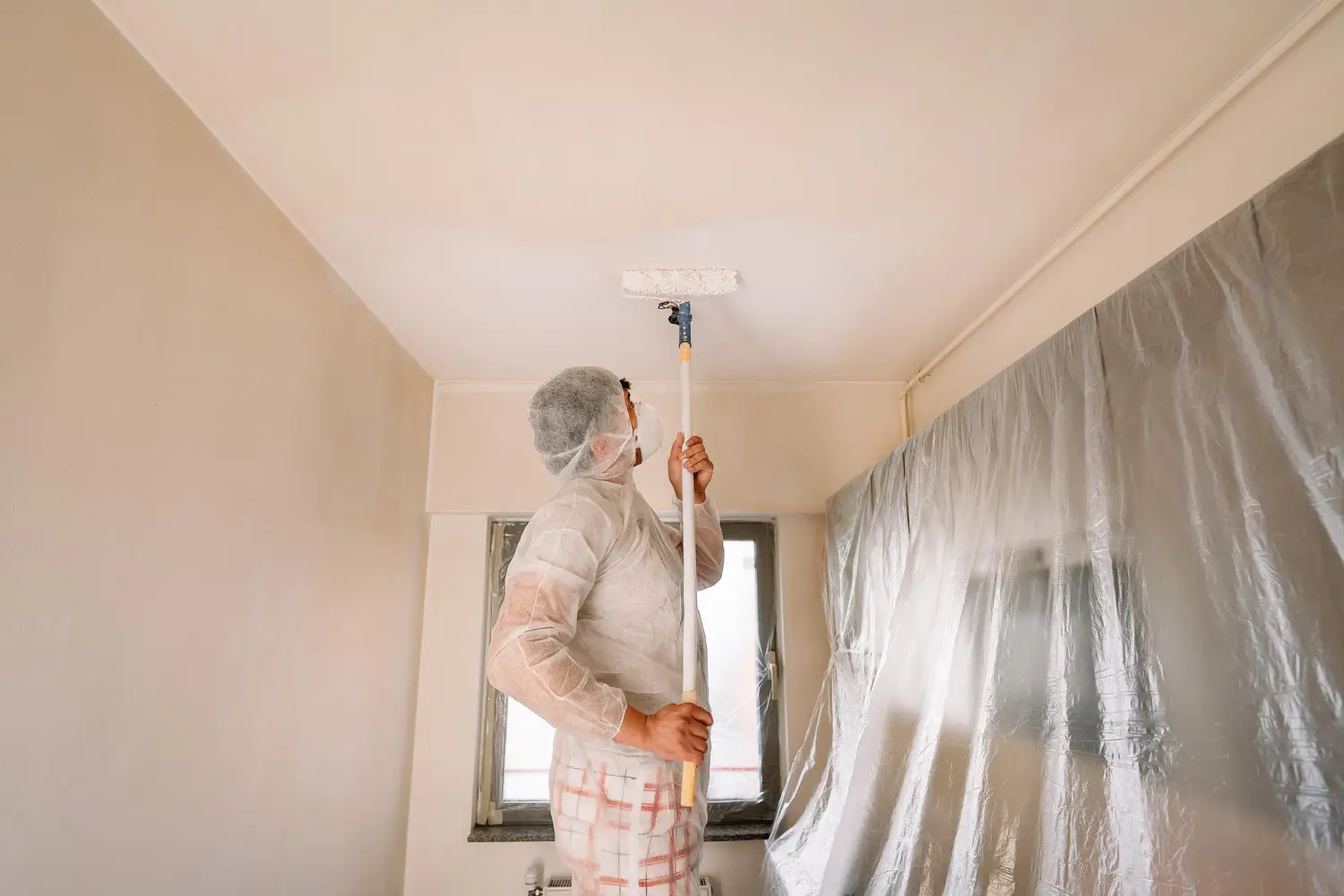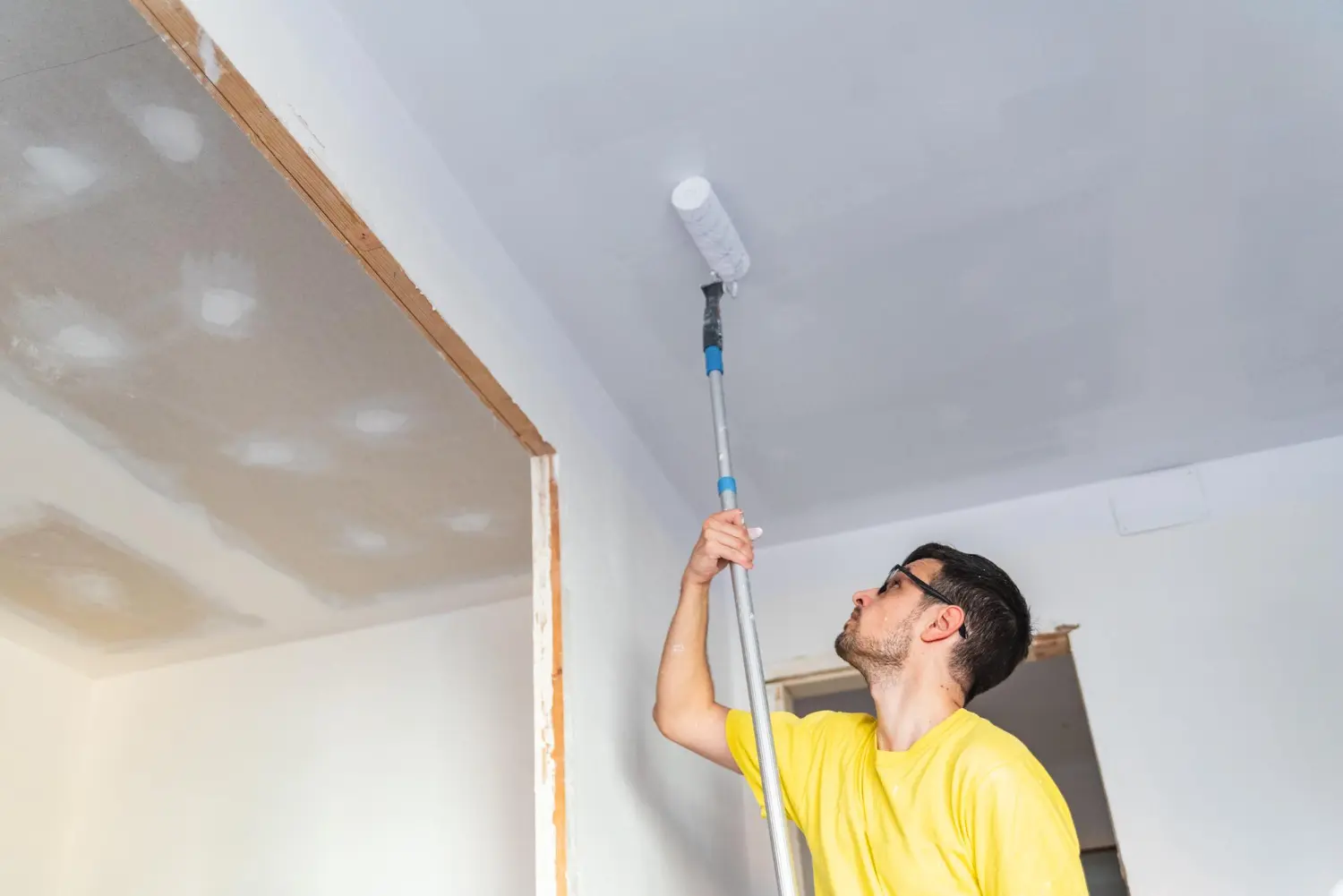10 Tips for Safer Interior Painting

Yes, we know – health and safety is just about the most boring subject imaginable for the average American. Being told what we should and shouldn’t be doing on a daily basis by the powers that be is far from inspiring.
Here at Homm CPS, we encounter the most bizarre accounts from homeowners across the US of home painting jobs gone bad. On the surface, you’d think that there was very little simpler and more straightforward than painting your home’s interiors. In reality – or at least in our experience – this often doesn’t turn out to be the case at all.
When you hire the pros, you immediately eliminate the likelihood of coming to any harm during the process. When you choose to paint your interiors yourself, there are certain dangers it’s never a good idea to overlook or ignore.

So at the risk of boring those who’ve long-since had enough of public health and safety advice, here’s our own top-ten tips for safer interior painting:
- First and foremost, don’t assume that because the products you are using don’t smell particularly strong or unpleasant that they aren’t releasing dangerous fumes. When painting indoors, always ensure that you keep all windows and doors open, using fans to maintain air flow.
- If it’s impossible or impractical to ventilate the space for any given reason, invest in a ventilator and don’t proceed without one. In addition, only ever paint enclosed interior spaces in short bursts with regular breaks.
- Whether using an electric sander or traditional sandpaper, it is imperative that you don a dust mask and safety goggles while doing so. You’d be amazed how easily this stuff can get into entirely the wrong places and cause all manner of problems.
- Chemical solutions should of course be handled with care, not to mention the appropriate personal protective equipment. Even if you feel a little silly wearing gloves and goggles to handle products around your own home, try to remember that just the smallest splash could have devastating consequences.
- Avoid plastic cloths at all costs when looking to protect the floors around your home. The reason being that in most instances, they have a habit of becoming dangerously slippery. It can be far safer and more convenient to use canvas drop cloths, or protective sheets made of just about any other fabric.
- Some of the paints you’ll be using and certainly the additional chemicals you’ll have around the place could be explosively flammable. This means that you need to ensure you keep them safely away from naked flames and extreme heat sources at all times. If you happen to be a smoker, this could be the best possible time to quit!
- If you need to remove or in any way tamper with any light switches or electrical sockets around the room, make sure you turn the power off at the mains before doing so. In fact, it’s a good idea to turn power off to the respective room even when simply painting around electrical installations.
- Always know the limitations of your ladder and ensure that it is positioned as securely as possible. If looking to tackle anything even remotely high, ensure there is at least one other (responsible) individual in the vicinity at the time, in case something goes wrong.
- Under no circumstances should you ever even think about mixing two or more chemicals together. Mixing compatible paints is one thing, but mixing toxic and flammable chemical products can be incredibly dangerous. So when you’re down to the final drops of any cleaning products, for example, don’t be tempted to combine them.
- Last up, however long the manufacturer states the paint needs to fully dry, it’s a good idea to increase this by at least 20%. Once again, it’s simply a case of ensuring that any potentially toxic fumes and/or flammability have been safely eliminated, before once again using the room as normal.
Common Sense Prevails
Approached with just a small amount of common sense, DIY paint jobs don’t have to constitute any real danger whatsoever. It’s just that the moment you begin taking things for granted tends to be the moment things go wrong.
Even if you’ve plenty of experience in these kinds of things, it’s still worth reminding yourself from time to time of the basics of health and safety. Of course, if you’d like to get things done the safest way possible, you know who to call!
For more information on anything to do with interior painting or to arrange an obligation-free quotation, get in touch with a member of the Homm CPS customer service team today.










